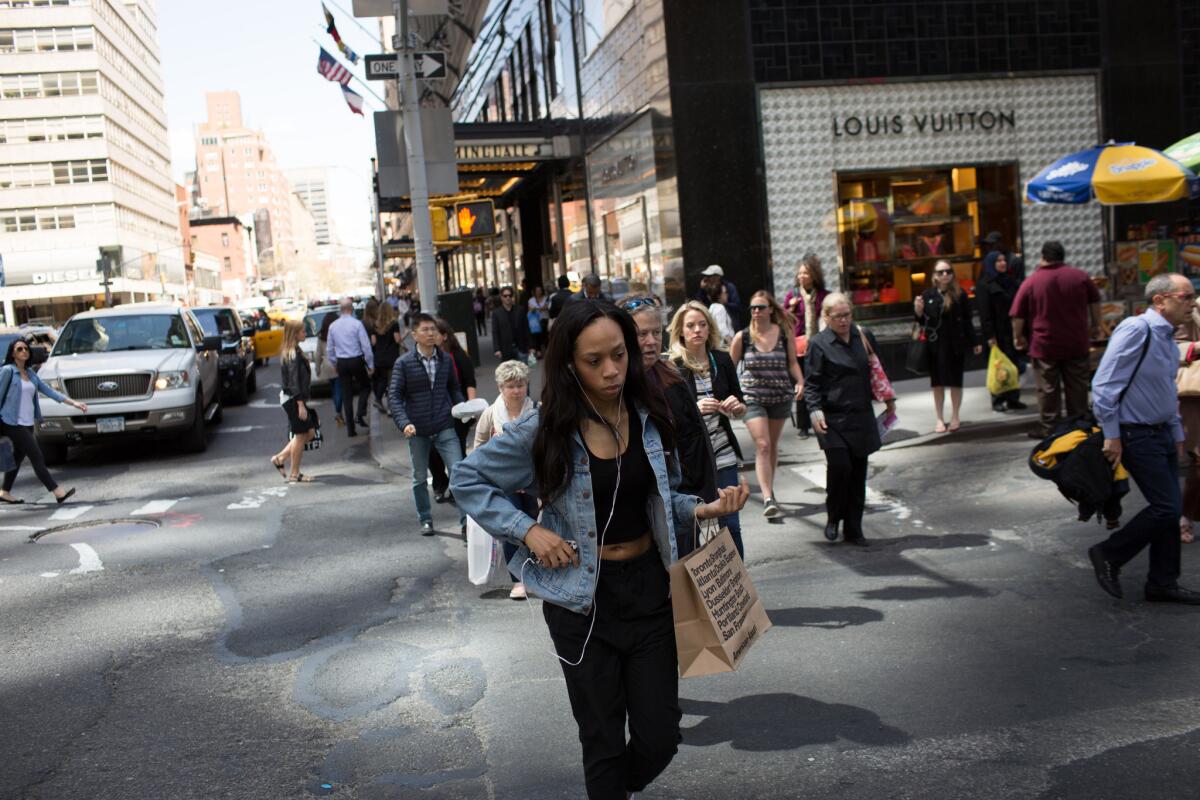Consumer spending unchanged in April despite solid income gains

Shoppers walk along Lexington Avenue in New York City on April 29.
- Share via
Reporting from Washington — Consumer spending was essentially unchanged in April despite solid income gains as Americans sought to save more of their earnings in the face of an uncertain economy.
Personal income rose 0.4% after showing no gain in March, the Commerce Department said Monday. The increase was larger than the 0.3% expected by economists.
But spending by consumers, which accounts for about two-thirds of economic activity, was disappointing.
Spending decreased slightly — by $2.6 billion, or less than 0.1% — to $12.2 trillion, the Commerce Department said.
Spending had increased an upwardly revised 0.5% in March after a weak winter, raising hopes that bad weather had been the main factor in a slowdown that saw spending decline in December and January even as gas prices continued to fall.
Economists had forecast spending would increase 0.2% in April.
Instead, consumers saved their income gains. The percentage of disposable income saved rose to 5.6% in April from 5.2% the previous month.
The annual inflation rate declined in April to 0.1% from 0.3% the previous month. The rate, based on personal consumption expenditures, is the preferred inflation gauge of the Federal Reserve.
The Fed wants annual inflation of 2%. Central bank policymakers have said they want to see inflation moving toward that level before they raise their benchmark short-term interest rate for the first time since 2006.
Excluding volatile food and energy prices, the so-called core annual inflation rate was 1.2% in April, down from 1.3% the previous month.
Economists are closely watching incoming data to determine if the economy is rebounding from a bad first quarter.
The Commerce Department reported Friday that the economy shrank at a 0.7% annual rate from January through March.
Economists said the contraction largely was caused by temporary factors — the West Coast ports slowdown and severe winter weather in parts of the country — and expect growth to return in the second quarter.
But other headwinds, particularly the strong dollar, are hindering the economy and could keep the annual growth rate below 2% this spring.
Consumer spending dropped sharply in the first quarter compared with the previous quarter as worries over the state of the economy led to an increase in the savings rate. And now spending has got off to a poor start in the second quarter.
Follow @JimPuzzanghera on Twitter
More to Read
Inside the business of entertainment
The Wide Shot brings you news, analysis and insights on everything from streaming wars to production — and what it all means for the future.
You may occasionally receive promotional content from the Los Angeles Times.











